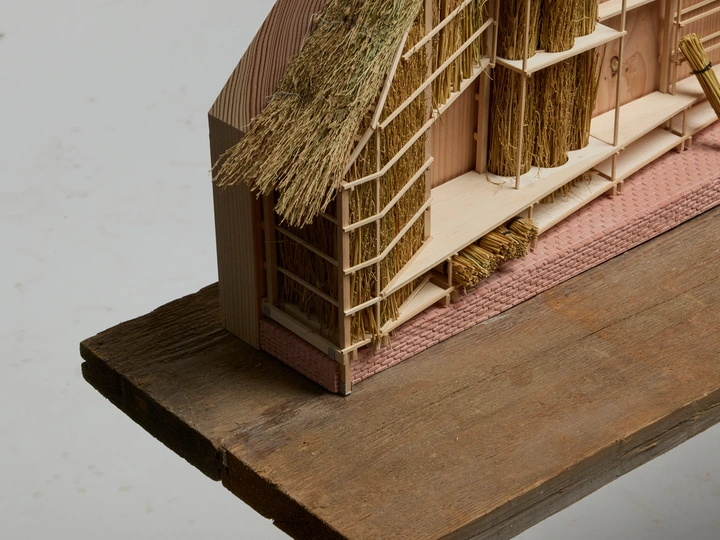Developing a climate responsive material practice

Luna Wirtz-Ortvald
Luna Wirtz-Ortvald and Camille Maingret are two architectural designers based in Copenhagen, sharing the common interest of cultural heritage and architectural crafts.
While Luna’s approach from Design Academy Eindhoven is rooted in fieldwork-based craft, material studies and conceptual research, her previous study and documentation of the traditional eelgrass thatched roof restorations on the Danish island of Læsø, was exhibited at Material District Utrecht 2025 and at Nieuw Zwanenburg in the Netherlands.
Camille's previous studies at HEAD Geneva in interior architecture strengthened a method combining different media such as video and model making. For her bachelor thesis, she took interest into architecture heritage narratives and was awarded by becoming a member of the Swiss association of Interior Architects.
Their collaboration started early in their master studies of Spatial Design at the Royal Danish Academy, in which their final thesis formed their investigative practice.
Intrigued by vernacular, seasonal and bioregional building methods, their work often discusses local material cultures and questions current building processes and methods. Cross-disciplinary knowledge exchange is what forms their foundation for in-depth investigations.
Their working process is informed by anthropological mapping processes that dissect local resources, social networks, industries, traditional crafts and techniques. As part of their investigative approach, working along with crafts(-wo)men and studying local residents plays an important role in their research.
Their approach is complemented by the combination of working with theoretical frameworks, fieldwork mappings and the ability to translate these findings into spatial interventions.
Situated in Hesnæs, Denmark, this project studies the traditional reed facade-cladding method, originally applied to address the local harsh climate. Facing the Baltic Sea, a storm flood in October 2023 caused complete destruction of the local harbour and affected several private houses.
This heritage investigation started as a master’s thesis project in which the proposal consisted of three interventions aiming to, on one hand, protect the built environment from further decay, and on the other, revive the social potential of the harbour. By investigating both the potential of a local private brick house and the public harbour area, these climate-responsive interventions seek to align with seasonal wind fluctuations. The first attempt of developing this material practice, consisted of reinterpreting the local reed-based cladding method, aiming to address different wind conditions through a conscious material manipulation, eventually resulting in an adaptive system.
In the continuation of our project, we envision expanding the radius of our investigation to combine other local resources, crafts and networks, in order to improve our proposal. We strongly believe in the importance of understanding the local resources and their potential of application, therefore an example could be, to study the local earth- and limestone compositions, in order to investigate the combination of reed-fibre and earth building methods, serving as wind-protective layers.
As our work consists of a more explorative approach, our method is based on collaboration with other disciplines, such as craftsmen and locals. We believe in cross-disciplinary knowledge exchange as a way of learning from various perspectives. Therefore, we aim to work alongside craftsmen to learn their techniques, dive further into the local network of residents to strengthen the village's social dimension, and host material-investigation workshops to collectively develop a climate responsive material practice.